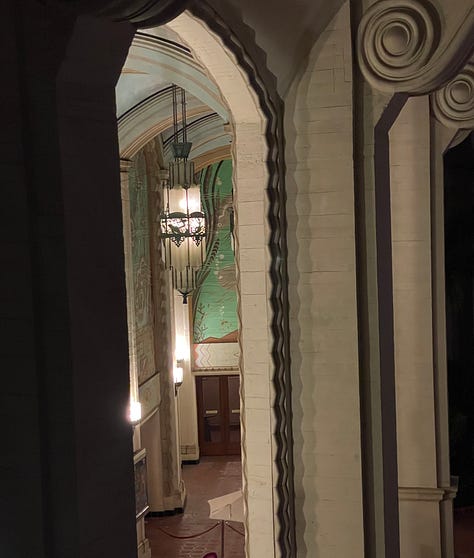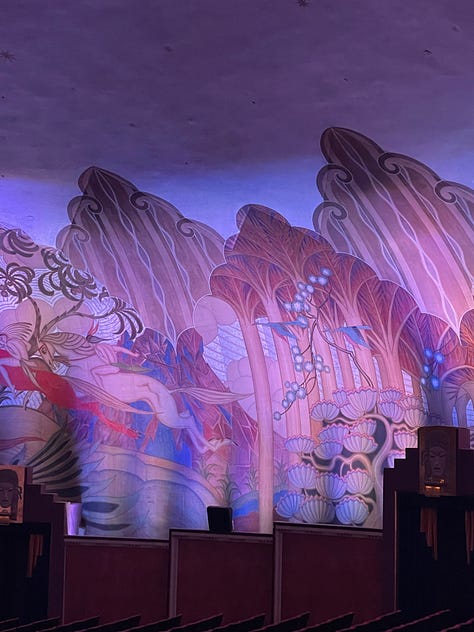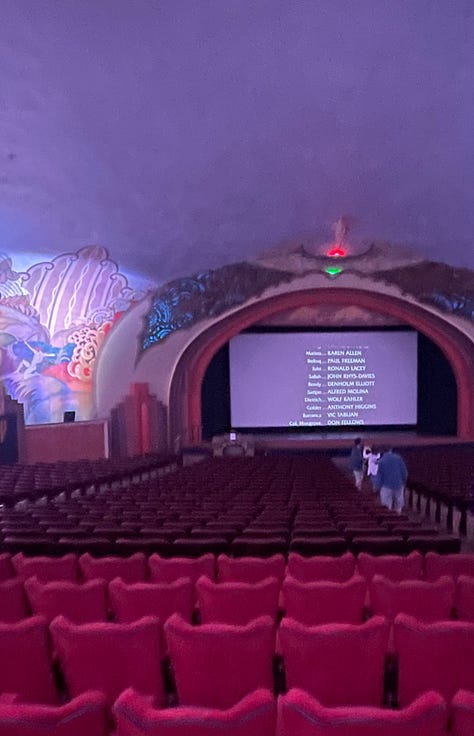It was a week-long reunion of old friends, gathered to celebrate a retirement. The seven of us lounged around on the couches in the beach house, drinking and making plans for the following evening. We would go to the movies. After all, a vacation on Catalina Island would not be complete without seeing a film at the gorgeous Art Deco theater in Avalon. We would bring along our favorite movie candy. Of course!
“What’s your favorite movie candy?” someone asked. Going around the room, the responses were immediate and heartfelt: Raisinets; Peanut M&Ms; Good and Plenty; Dots; Red Vines; Twizzlers. A passionate debate ensued over the relative merits of Red Vines and Twizzlers. Bjorn argued that Twizzlers are less dense, so you can eat more of them. Bella maintained that Twizzlers are a plastic, fake Red Vine substitute, clearly inferior.
Buoyed by the carefree banter, we segued to childhood recollections of favorite candies. And it wasn’t simply about the candy. For our childhood selves, buying candy was an event, an experience. We each had vivid memories of the small neighborhood stores and snack bars where we chose candy cigars, candy cigarettes, Pixy Stix, bubble gum, wax lips, wax bottle candy, Big Hunks, Lemon Heads, and U-No bars. The youngest among us mentioned Pop-Rocks, causing us to pause, for they didn’t hit the shelves until 1975. By then most of us in the room had traded our lust for candy for new temptations. Indeed, candy can define a generation.
Memories of upscale candy from actual candy stores were shared with reverence: chocolate covered honeycomb that dissolved in your mouth; rock candy that looked remarkably like quartz crystals; salt water taffy pulled on mechanical arms right there in front of you. Kid heaven.
To get the candy, we spent our milk money, collected bottles to redeem, searched in sofa cushions, crawled under reclining chairs, and scavenged beneath sports bleachers. One of us, who will remain nameless, gathered mercury-head dimes out of her father’s dresser drawer. Very resourceful.
The stories of our childhood quests for candy were similar. Why were we all so desperate to get a sugar fix? In fact, scientists have found that the childhood craving for sugar is universal, rooted in biology, and is present from day one. Curiously it dissipates in adulthood. Something to do with hormones.*
The next day we hunted down the required candy and carefully stuffed it into the women’s oversized purses. This is a gender role I am willing to accept, by the way.






That evening we walked along the waterfront promenade that leads to the theater, bought our tickets in the gorgeous outdoor lobby, and entered the 1,184 seat movie palace. We took plenty of time to admire the breathtaking interior with its red velvet seats, its stylized Art Deco murals, and its 50 foot dome. We chose our seats and gazed up at the painting of Venus at the apex of the proscenium and waited for the film to start. As we watched the gripping opening scenes, we surreptitiously opened our bags of candy. The screen action ensued and we passed the bags and boxes of candy back and forth among us, eating until we could stand no more.
The movie lasted longer than our appetites, but like when we were kids, it wasn’t just about the candy; it was the theater, the movie, the companionship. It was a whole experience.
*Kroen, Gretchen Cuda. Kids’ Sugar Cravings Might Be Biological. Morning Edition, Sept. 26, 2011




A yummy read. Thank you Janet.
To nickel or dime, that was the question
I was a nickeler but doubled down with Dots and Good n Plenty to get through the second feature.
Every town had its plaster and Paris art deco palace where in little downtown Santa Clara an usher would guide you with their cone flashlight into the dark womb of fantasy for 12 cents at Saturday matinee,